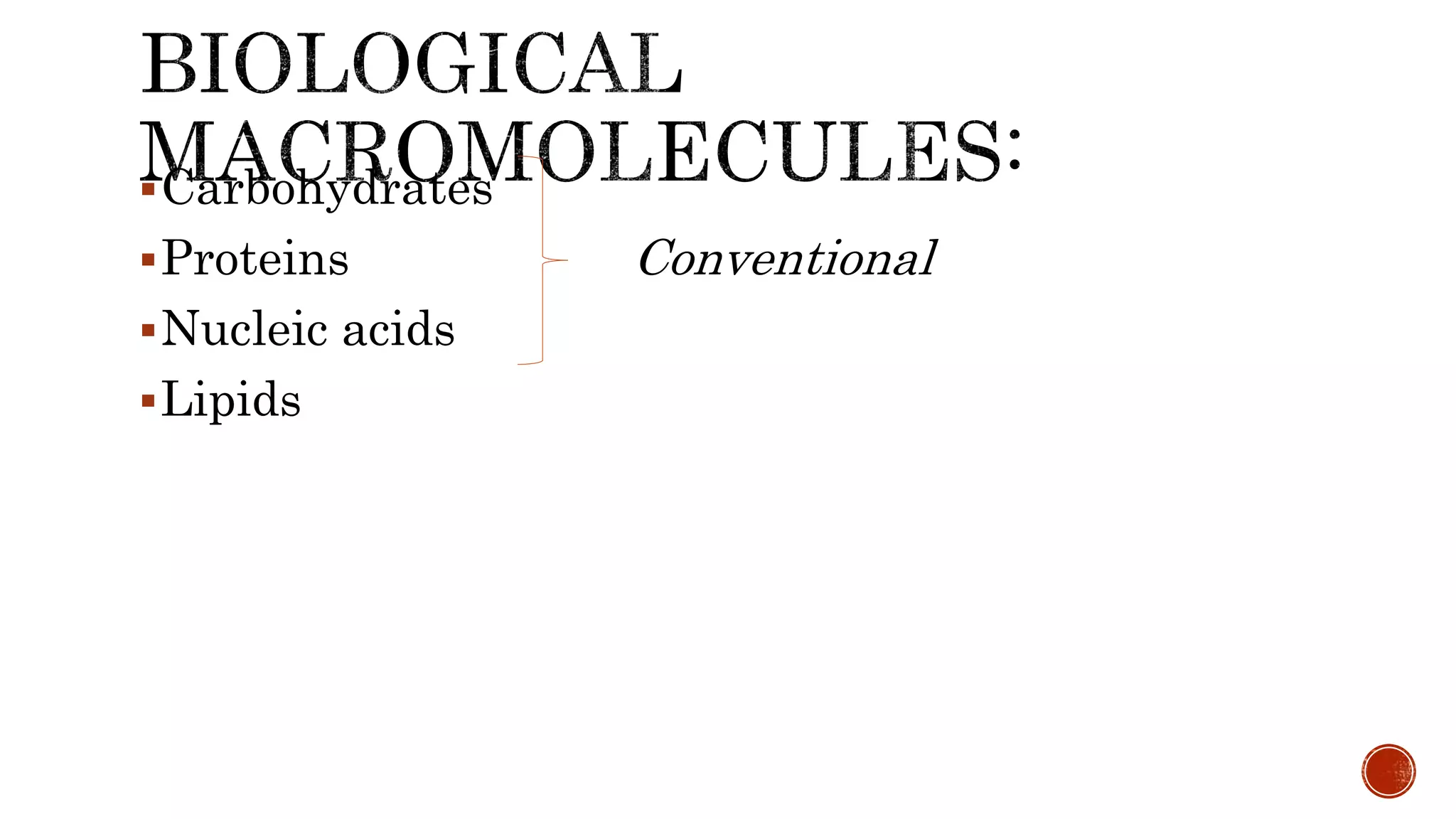The document discusses the key macromolecules that are essential for life - carbohydrates, proteins, lipids, and nucleic acids. It provides details on their monomers, polymers, functions, examples, and structural organization. The four macromolecules are large molecules formed by polymerization of smaller subunits. They perform critical roles like energy storage, structure, catalysis and information transfer in living organisms.






























![Polymers of deoxyribosenucleotides
Monomeric units: dAMP, dGMP, etc.
Chargaff’s rule: molar equivalence between the
purines and pyrimidines in DNA
Watson and Crick model (1953) [B-DNA]
1. Right handed double helix
2. Width = 2nm
3. Each turn = 3.4nm, with 10 pairs, therefore distance
between each pair 0.34nm
4. Deoxyribose phosphate backbone (3’-5’ phosphodiester
bond); hydrophilic; N-bases are stacked inside & are
hydrophobic](https://image.slidesharecdn.com/biologicalmacromolecules1-180827112119/75/Biological-macromolecules-M-Sc-Zoology-University-of-Mumbai-31-2048.jpg)

![Variations of conformation of nucleotides
6 diff. forms: A, B, C, D, E, & Z. [B, A & Z are imp]
B-form => Watson & Crick; most predominant
under normal physiological conditions
A- form=> right handed helix; 11bp per turn;
tilting of bps by 20o away from central axis
Z- form => left handed helix; 12bps per turn;
strands move in a zig-zag fashion
Transition between helical forms significant in
regulating gene expression](https://image.slidesharecdn.com/biologicalmacromolecules1-180827112119/75/Biological-macromolecules-M-Sc-Zoology-University-of-Mumbai-33-2048.jpg)




